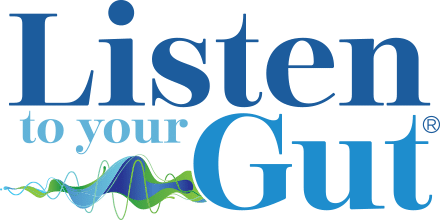Let’s talk about what ADHD is, then get into some natural remedies for Attention Deficit Hyperactivity Disorder (ADHD)…
What Is Attention Deficit Hyperactivity Disorder (ADHD)?
ADHD, or attention deficit hyperactivity disorder, is a combination of specific problematic behaviours or symptoms. Attention deficit disorder symptoms include:
- a short attention span
- problems focusing
- poor impulse control
- aggressive behaviour
- frantic, scattered energy
- annoying behaviours, often repetitive
- difficulty learning in an academic setting
ADHD is usually diagnosed in childhood. Symptoms often diminish with age, and as the ADHD person learns coping skills and strategies to deal with their symptoms.
As a result of these characteristics and behaviours (and people’s reactions to them), many children with ADD and ADHD symptoms also struggle with low self-esteem, poor peer relationships, strained family relationships, and a lack of success in school and in group and social settings.
Natural Remedies For ADHD – Attention Deficit Hyperactivity Disorder
A marked change in behaviour is usually seen from simultaneously changing the diet, supplementing with missing nutrients and balancing the gut microbiota (getting mostly good bacteria in the gut) of kids who suffer from ADHD, ADD (attention deficit disorder without hyperactivity), or any other label that involves any of these symptoms.
Diet Guidelines for ADD and ADHD
The first aspect to test to treat attention deficit disorder in children is to take your child off all processed foods (those with artificial colors, flavors, additives, preservatives, flow agents, etc.) and all sugar (except whole fruits).
YES, this is extremely difficult, especially in our culture. And your child will go through bonafide “withdrawal” – the same as if they had been on a drug. But if you remove these substances for three weeks, you will have a chance to see your REAL child. Likely, neither you, nor your child, know who that person is. So although the withdrawal is nasty, if your child never gets to experience their true self, they will not have the motivation to sustain healthy habits for the long-term.
Then test adding back in the occasional sugar items – but still no processed foods – and see what happens. Depending on your child’s reaction, adjust their diet accordingly. Be sure to watch for tolerance thresholds; sometimes one cookie per day is okay, sometimes only one cookie per week is okay
Then feed your child a bag of artificially flavored potato chips (for example), but no sugar that day. And see what happens.
Then feed them a chocolate bar AND a bag of MSG-laden, artificial flavor chips. And see what happens over the next four hours.
This kind of testing will help you determine what affects your child the most – sugar or chemicals – or if it’s the combination that’s the killer.
For my eldest, he is fine with sugar on its own. And he is fine with the occasional bag of chips or Doritos. BUT, combine sugar WITH the artificial, chemical crap and yowsers, none of us want to know him. My mum once said to me, “You know, if he didn’t have you for his parents, he’d probably be on drugs to control his behaviour.”
Top Food Allergies and Intolerances for ADHD and ADD
The other aspect of diet you need to test is your child’s sensitivity (or allergy) to the top irritant foods:
- Pasteurized dairy products (RAW dairy is usually okay)
- Wheat (and then also test for gluten)
- Corn (especially GMO corn)
- Sugar (which we already talked about above)
- Grains and/or potatoes (because these digest quickly into sugars)
Test your child’s reaction to at least wheat and pasteurized dairy for sure (these are the most common intolerances), following the same guidelines given above for sugar and chemicals. And then also test for tolerance thresholds. Again, be prepared for a withdrawal and detox period where things may get worse for a short time, as Laura Woods shares with us:
“I had three foster boys, one of which was diagnosed with ADHD. He was 7 and couldn’t read, and I was always getting calls from the school about his behaviour. I had him food allergy tested and put him on an avoidance diet (I did the testing and the avoidance diet along with him to make it easier for him).
Of course, after about a week on the avoidance diet all of his problem symptoms and behaviours flared up, and my phone was ringing off the hook – the school, neighbours, other parents… Then, about day ten, he calmed down, focused, and became a “normal” 7-year-old. I’ll never forget getting a call from his very emotional teacher asking me what I had done, and telling me that he was reading!”
Key Nutrients and Probiotics for ADD and ADHD Treatment
Simultaneously with these dietary adjustments, you need to calm the nervous system and normalize the gut flora. Natasha Campbell-McBride really nailed this component in her GAPS book (for autistic kids).
So at the same time as you remove the sugar and additives from your child’s diet, you need to supplement with:
Omega-3 oil – give Udo’s Choice oil and/or a clean, high quality cod liver oil, or krill oil. For kids it’s easiest to give them Udo’s in a shake or smoothie, or give them the lemon-flavored cod liver oil to chew. I like the cod liver oil as it also naturally contains Vitamin A. If you use the brand I recommend, there is no issue of mercury or any other contamination as it is micro-filtered and then tested.
Good fats – make sure your child gets plenty of organic, or even better, grass-fed butter, coconut oil, and whole eggs. If your child won’t eat eggs, the yolk is the important part, so you can stir egg yolk – not the white – into hot cooked pasta (just makes the sauce more creamy), or add them to smoothies or shakes. Butter and egg yolks also contain Vitamin A and another crucial nutrient that most are deficient in – Vitamin K2.
Antioxidants – CoQ10, Vitamin C, and pycnogenol or grapeseed.
Bioflavonoids – mixed bioflavonoids are best, otherwise just quercetin is okay.
Magnesium – the form depends on whether your child tends to have a loose stool or constipation. See my blog post on magnesium for complete guidelines. My kids take both the nano-sized magnesium (also contained in Bone Matrix) and Natural Calm drinkable magnesium (raspberry lemon flavor) when they feel their bowels getting sluggish (usually when they eat too much carbs!).
Probiotics – Natren is the only brand I recommend at this current time; see my blog post on probiotic selection criteria for why. If your child can swallow capsules, the Healthy Trinity are the easiest way to take them (one per day). Otherwise, my kids will happily take the powders mixed in yogurt or raw chocolate milk.
These are the basic attention deficit disorder natural treatment guidelines – individual adjustments may be necessary.
For my kids, I see a marked difference in their behaviour and attention span from just spending ONE day at a friend’s house and eating “normal” foods there. People always comment on what amazing kids we have, but I wonder how much other children are being handicapped just by what’s going, and not going, into their bodies.


